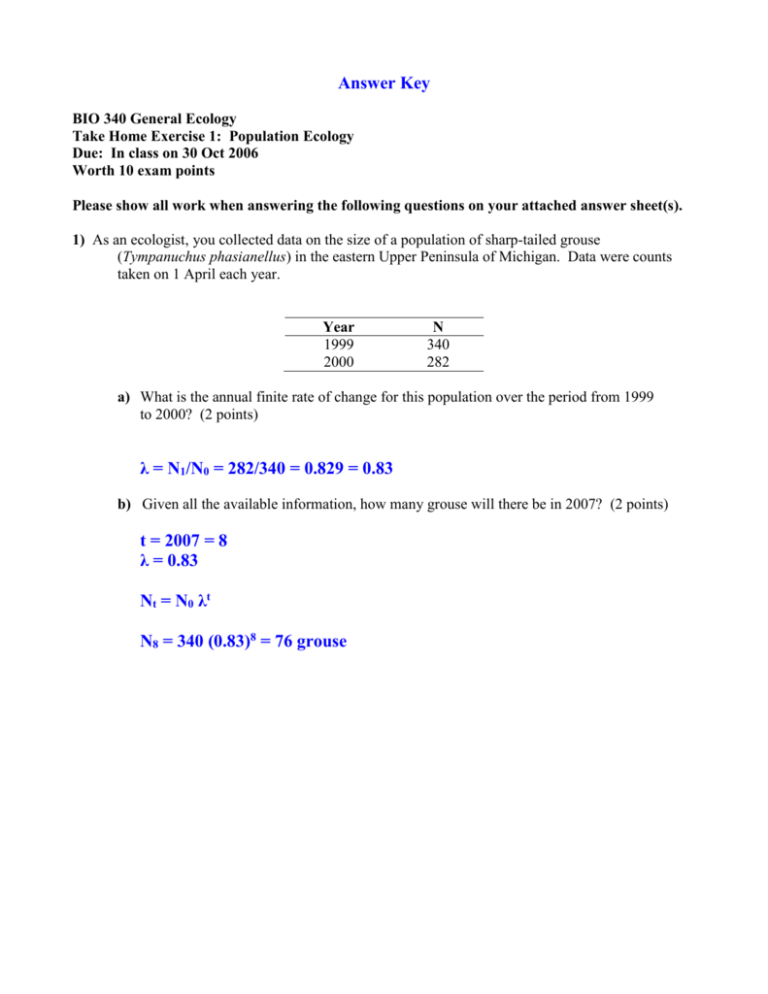BIO 440 Wildlife Ecology
advertisement

Answer Key BIO 340 General Ecology Take Home Exercise 1: Population Ecology Due: In class on 30 Oct 2006 Worth 10 exam points Please show all work when answering the following questions on your attached answer sheet(s). 1) As an ecologist, you collected data on the size of a population of sharp-tailed grouse (Tympanuchus phasianellus) in the eastern Upper Peninsula of Michigan. Data were counts taken on 1 April each year. Year 1999 2000 N 340 282 a) What is the annual finite rate of change for this population over the period from 1999 to 2000? (2 points) λ = N1/N0 = 282/340 = 0.829 = 0.83 b) Given all the available information, how many grouse will there be in 2007? (2 points) t = 2007 = 8 λ = 0.83 Nt = N0 λt N8 = 340 (0.83)8 = 76 grouse 2) Given the following life and fecundity table for gray squirrels (Sciurus carolinensis): Age Class, years (x) 0.5 1.5 2.5 3.5 4.5 5.5 6.5 7.5 Number Alive 530 134 56 39 23 12 5 0 Number that Died 396 78 17 16 11 7 5 0 Survivorship (lx) 1.0 0.253 0.106 0.074 0.043 0.023 0.009 0 Fertility (mx) 0.05 1.28 2.28 2.28 2.28 2.28 2.28 0 lxmx x lxmx 0.05 0.324 0.241 0.168 0.099 0.052 0.022 0 0.025 0.485 0.602 0.587 0.445 0.284 0.140 0 a) Complete the Survivorship column and the lxmx and x lxmx columns (2 points). b) What is the net reproductive rate? Remember to use units. (2 points) R0 = Σlxmx = 0.954 = 0.95 squirrels per female c) What is the generation time? Remember to use units. (2 points) T = Σx(lxmx) / R0 = 2.57/0.95 = 2.7 years











